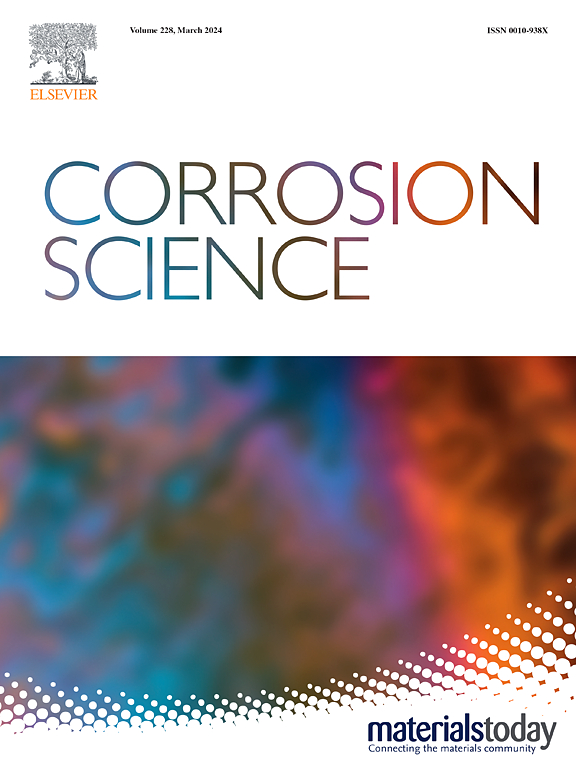Greatly improving corrosion resistance of Ti alloy by regulating basketweave microstructure and phase electronic structure
IF 7.4
1区 材料科学
Q1 MATERIALS SCIENCE, MULTIDISCIPLINARY
引用次数: 0
Abstract
In this paper, the effects of basketweave structure and phase electronic structure regulation on the corrosion resistance of Ti-0.3Mo-0.8Ni alloy were investigated. With the increasement of the V quality fraction in the alloy, the lath length and orientation of α phases gradually become shorter and more. The microstructure transforms from lamellar structure to basketweave structure, which the content of the β phase and the ratio of β/α phase boundary are increased greatly. With the increasement of V quality fraction, the passivate film becomes denser, thicker and more stable, which is because the increasement of the ratio of α/β phase boundary makes the passivate film easier to form. In addition, the XPS results show that the proportion of TiO2 and metal oxides in the passivate film increases. The corrosion resistance increases with the addition of V content. Especially, the V quality fraction ≥ 4 wt.%, the corrosion resistance is greatly increased. It is because the V changes the electronic structure of the β and α phase, which reduces the density of electronic states near the Fermi level. Secondly, the content of β phase is greatly increased because of the basketweave structure, which also improves the corrosion resistance.
通过调节编织组织和相电子结构,大大提高了钛合金的耐蚀性
本文研究了编织结构和相电子结构调控对Ti-0.3Mo-0.8Ni合金耐腐蚀性能的影响。随着合金中V质量分数的增加,α相的板条长度和取向逐渐变短、变多。显微组织由片层组织转变为篮织组织,β相含量和β/α相边界比均显著增加。随着V质量分数的增加,钝化膜变得更致密、更厚、更稳定,这是因为α/β相边界比的增加使钝化膜更容易形成。此外,XPS结果表明,钝化膜中TiO2和金属氧化物的比例增加。随着V含量的增加,耐蚀性提高。特别是V质量分数≥ 4 wt。%,耐腐蚀性大大提高。这是因为V改变了β相和α相的电子结构,降低了费米能级附近的电子态密度。其次,由于篮织结构的存在,大大增加了β相的含量,也提高了耐腐蚀性。
本文章由计算机程序翻译,如有差异,请以英文原文为准。
求助全文
约1分钟内获得全文
求助全文
来源期刊

Corrosion Science
工程技术-材料科学:综合
CiteScore
13.60
自引率
18.10%
发文量
763
审稿时长
46 days
期刊介绍:
Corrosion occurrence and its practical control encompass a vast array of scientific knowledge. Corrosion Science endeavors to serve as the conduit for the exchange of ideas, developments, and research across all facets of this field, encompassing both metallic and non-metallic corrosion. The scope of this international journal is broad and inclusive. Published papers span from highly theoretical inquiries to essentially practical applications, covering diverse areas such as high-temperature oxidation, passivity, anodic oxidation, biochemical corrosion, stress corrosion cracking, and corrosion control mechanisms and methodologies.
This journal publishes original papers and critical reviews across the spectrum of pure and applied corrosion, material degradation, and surface science and engineering. It serves as a crucial link connecting metallurgists, materials scientists, and researchers investigating corrosion and degradation phenomena. Join us in advancing knowledge and understanding in the vital field of corrosion science.
 求助内容:
求助内容: 应助结果提醒方式:
应助结果提醒方式:


